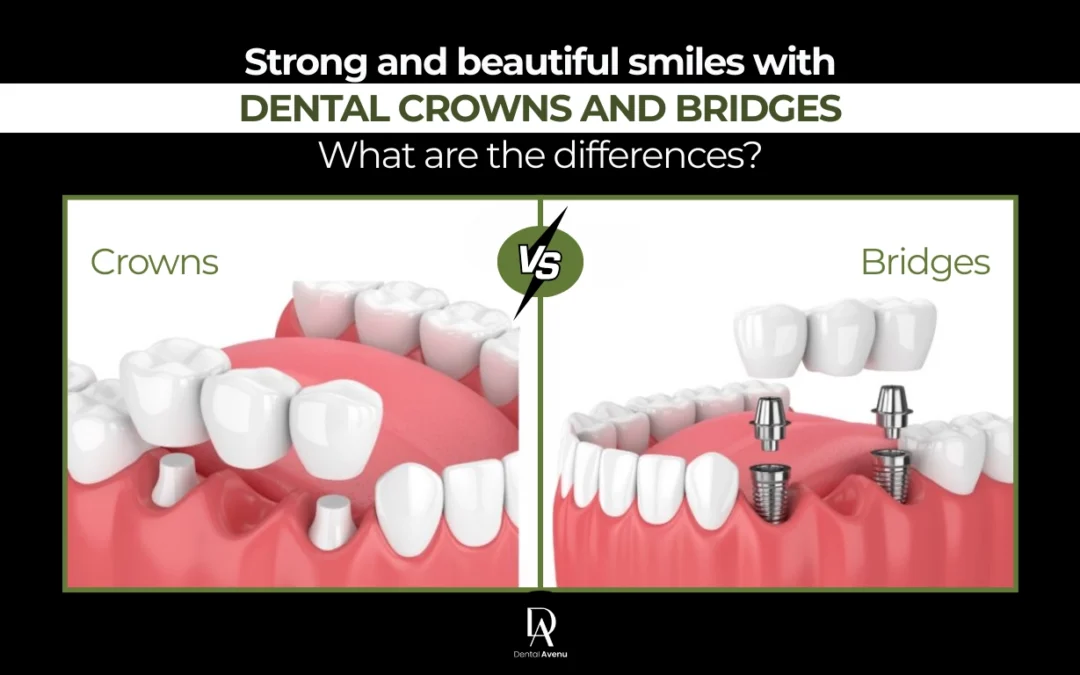If you’ve been told you need a dental crown or a fixed bridge, one of the first questions that may come to mind is: Can I have these restorations made from different materials? The answer is yes—and understanding the differences between the materials available can help you make an informed decision that suits both your health and your smile.
At Dental Avenu, we’re committed to helping you feel confident and comfortable with your dental treatment. In this blog, we’ll explain the types of materials commonly used for crowns and bridges, how to choose the best option for you, and answer some frequently asked questions—without overwhelming or scaring you with technical jargon.
If you’d like to speak with a professional, call us today at (786) 703-4978 to schedule your appointment.
What Are Dental Crowns and Bridges?
Before diving into materials, it’s helpful to understand what crowns and bridges actually are.
Dental Crowns: A crown is a custom-made cap placed over a damaged or weakened tooth to restore its shape, function, and appearance. Crowns are commonly used after root canals, large fillings, or fractures.
Dental Bridges: A bridge is a fixed restoration used to replace one or more missing teeth. It’s made up of one or more artificial teeth (pontics) anchored to neighboring teeth or implants with crowns.
Both crowns and bridges help restore chewing function, support facial structure, and prevent teeth from shifting out of place.
Types of Materials for Crowns and Bridges
There is no one-size-fits-all material for crowns and bridges. Each type has its pros and cons depending on the location of the restoration, your aesthetic goals, bite pressure, and budget.
1. All-Ceramic or Porcelain
These are a popular choice, especially for front teeth, because they look very similar to natural teeth.
Pros:
Excellent aesthetics—closely mimics natural enamel.
Metal-free, suitable for people with metal sensitivities.
Ideal for front teeth and visible areas.
Cons:
May not be as strong as metal-based options.
Can chip or wear faster if used on back teeth under heavy bite pressure.
2. Porcelain-Fused-to-Metal (PFM)
These crowns have a metal interior for strength, covered with porcelain for a more natural look.
Pros:
Stronger than all-porcelain crowns.
Good balance between durability and aesthetics.
Commonly used on back teeth.
Cons:
The metal base may become visible near the gumline over time.
Slightly less natural-looking than all-ceramic options.
3. Metal (Gold or Alloy)
Crowns made entirely of metal, such as gold or other dental alloys, are extremely durable and long-lasting.
Pros:
High strength and durability—ideal for molars.
Less tooth structure needs to be removed.
Rarely chip or break.
Cons:
Not tooth-colored—better for back teeth where appearance is less critical.
Some patients may be allergic to certain metals.
4. Resin (Composite)
Resin-based crowns are made from a tooth-colored composite material, offering a budget-friendly option.
Pros:
Lower cost.
Can be color-matched to your natural teeth.
Cons:
Less durable—more prone to wear, chipping, and discoloration over time.
Typically used as a temporary or short-term solution.
Which Material Should You Choose?
The “best” material depends on several personal factors:
Location of the tooth: Front teeth benefit from aesthetics, while back teeth require more strength.
Bite force and habits: If you grind your teeth or have a strong bite, metal or PFM may be better.
Budget: Composite and resin are more affordable, while all-ceramic and gold options tend to cost more.
Allergies or sensitivities: Some people prefer metal-free materials to avoid any allergic reactions.
The most important thing is to have a detailed conversation with your dentist. At Dental Avenu, we’ll guide you based on your clinical needs and help you weigh the options that suit both your oral health and your preferences.
How Long Do Crowns and Bridges Last?
The lifespan of a crown or bridge depends on the material and how well you care for it. On average:
All-ceramic: 10–15 years with proper care.
PFM: 10–20 years.
Metal: Can last over 20 years.
Resin: 5–7 years or less, depending on wear.
Good oral hygiene, regular checkups, and avoiding hard or sticky foods will help your restorations last longer.
Have Questions? We’re Here to Help!
At Dental Avenu, we know that making decisions about your dental health can feel overwhelming. That’s why we’re here to walk you through your options with patience and clarity. Whether you’re considering a single crown or a full bridge, we’ll help you understand the benefits of each material—without pressure or confusion.
Call us today at (786) 703-4978 to book your consultation and find out which solution is best for your smile.
Frequently Asked Questions (FAQs)
1. Will my crown or bridge look like a real tooth?
Yes! Especially with porcelain and ceramic materials, your restoration can be custom-shaded to blend perfectly with your natural teeth.
2. Is the procedure painful?
No. The area will be numbed with local anesthesia, and most patients experience minimal discomfort during and after the procedure.
3. Can I eat normally with a crown or bridge?
Absolutely. Once the crown or bridge is properly fitted and cemented, you can eat most foods as usual—just avoid chewing on ice or very hard objects.
4. What happens if my crown or bridge feels loose?
Contact us right away. A loose crown or bridge can allow bacteria to enter and cause damage underneath. We can re-cement or replace it if needed.
5. Can I choose the material, or does the dentist decide?
You have a say! Your dentist will make recommendations based on your needs, but the final decision is made together with you.

